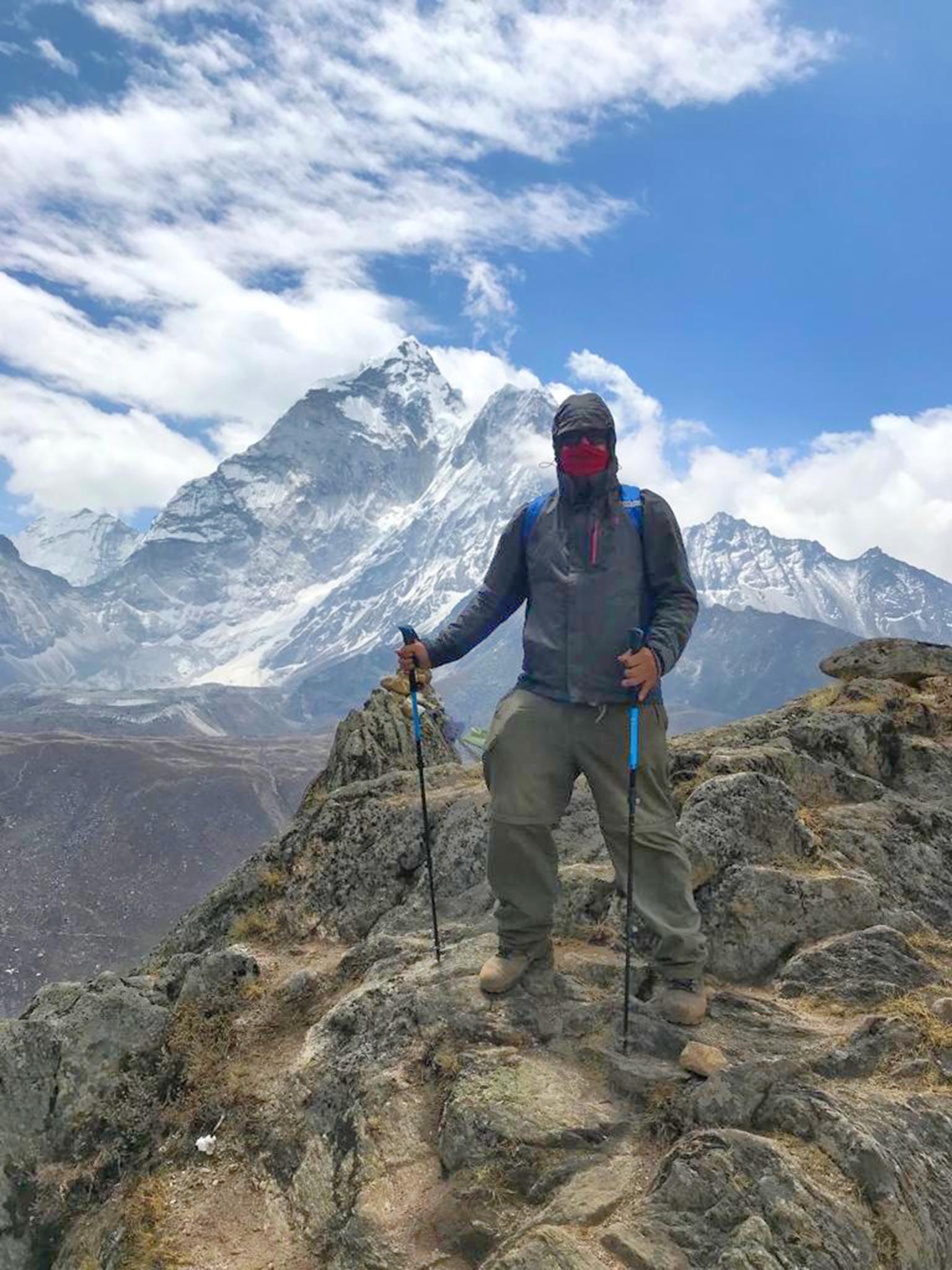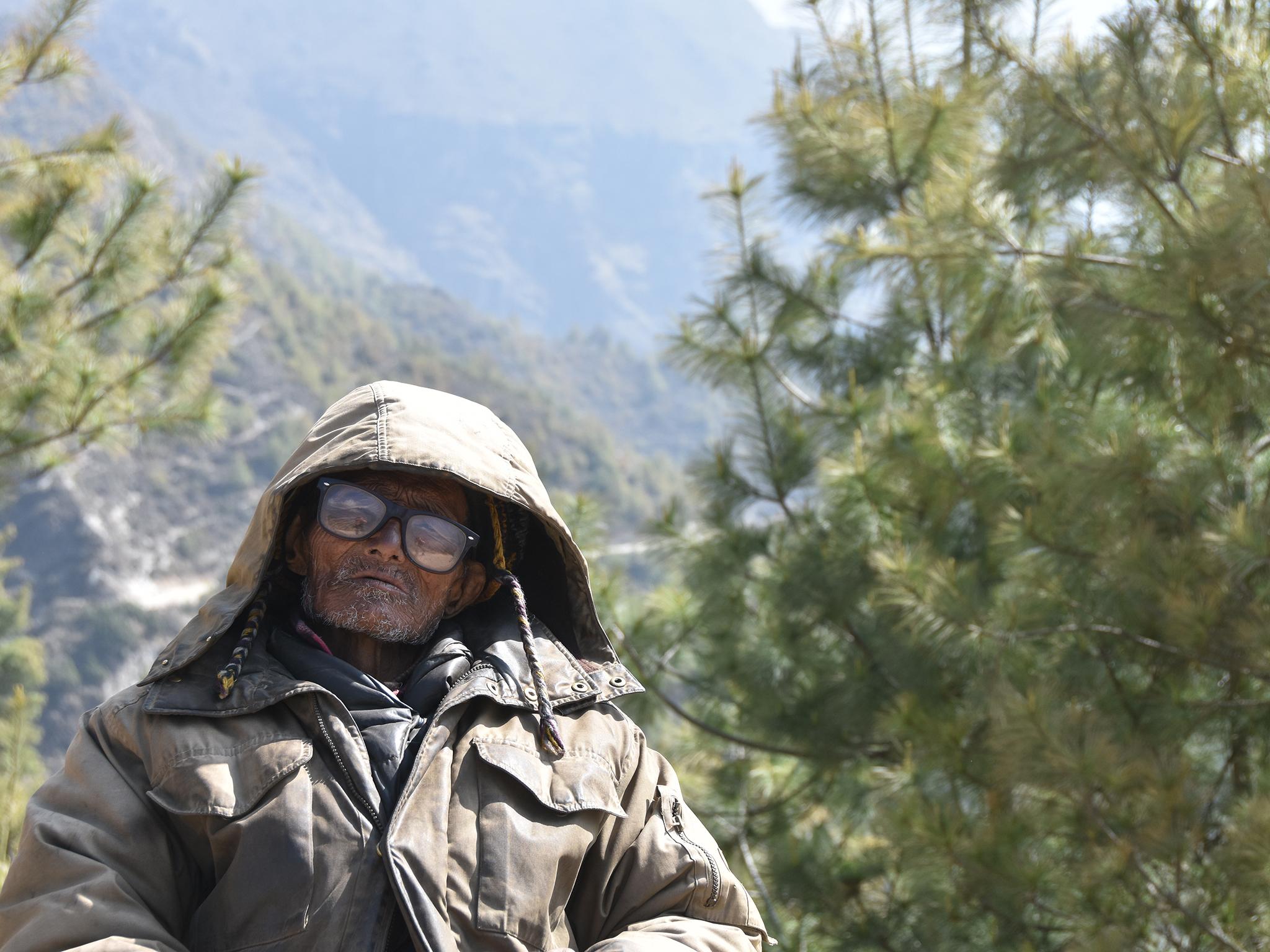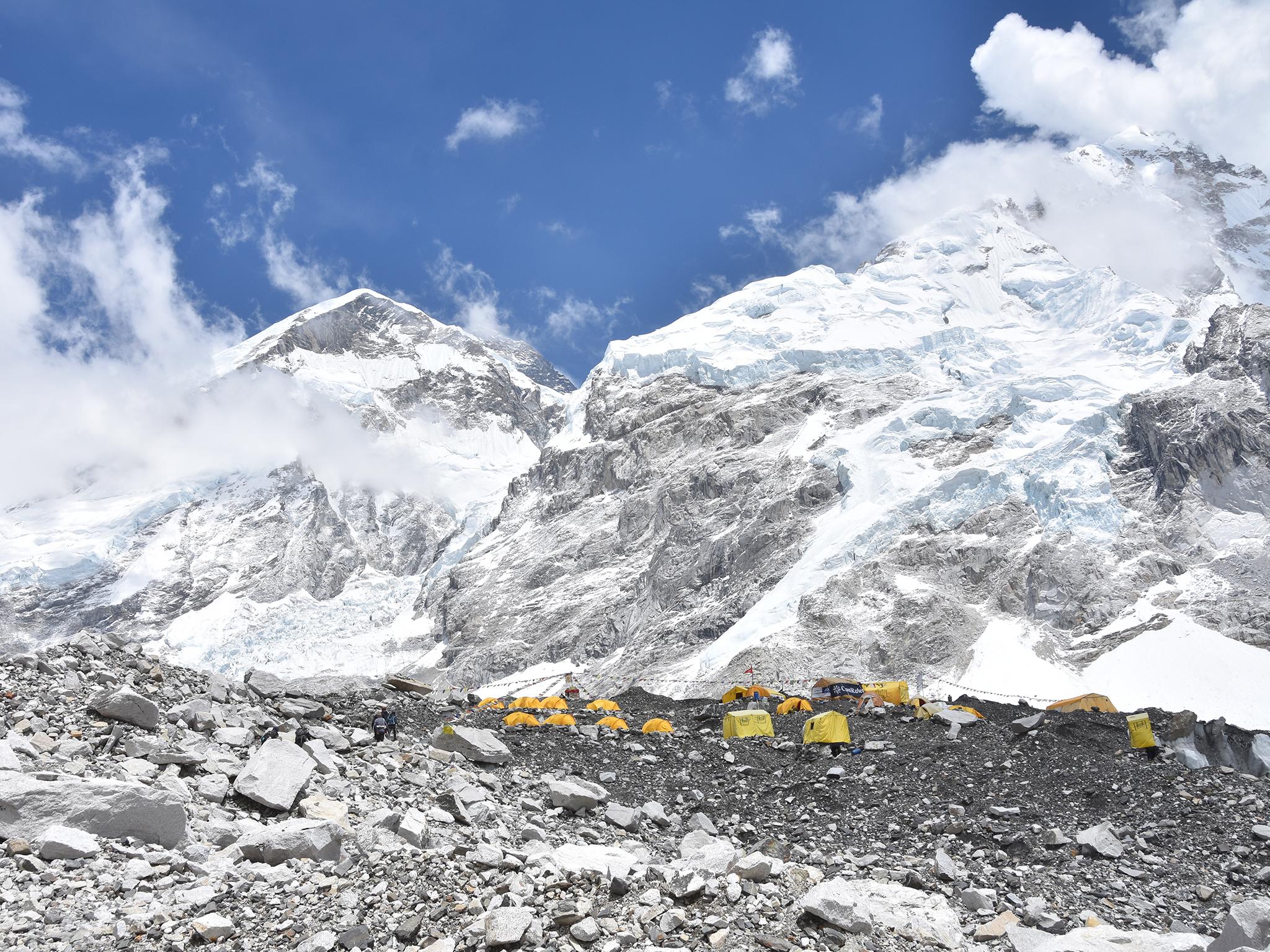Mount Everest is no longer just for adventurers – it’s a well-trodden tourist trail
With overcrowding on the mountain itself already being blamed for one of Everest’s deadliest climbing seasons, James Draven takes a look at how this year’s closure of China’s base camp is impacting Nepal’s most famous tourist trail


Your support helps us to tell the story
From reproductive rights to climate change to Big Tech, The Independent is on the ground when the story is developing. Whether it's investigating the financials of Elon Musk's pro-Trump PAC or producing our latest documentary, 'The A Word', which shines a light on the American women fighting for reproductive rights, we know how important it is to parse out the facts from the messaging.
At such a critical moment in US history, we need reporters on the ground. Your donation allows us to keep sending journalists to speak to both sides of the story.
The Independent is trusted by Americans across the entire political spectrum. And unlike many other quality news outlets, we choose not to lock Americans out of our reporting and analysis with paywalls. We believe quality journalism should be available to everyone, paid for by those who can afford it.
Your support makes all the difference.Visibility from the helicopter cockpit is zero. Omnipresent cloud obscures all the windows, but I don’t need to look at the careening artificial horizon on the chopper’s instrument panel to tell me which way is up – the lurching in my stomach and my reeling inner ear both assure me that we are indeed flying sideways. Nevertheless, a break in the clouds briefly confirms what I already know as it reveals the pine-clad depths of the Khumbu Valley, disconcertingly hovering past my right shoulder.
“I’m just slowing us down,” explains the pilot, who has braved dense fog and thin air to come and rescue me from the foot of Mount Everest. “We’re coming in too fast,” he adds as the chopper drops onto a grassy, makeshift helipad with the speed and grace of a falling breeze block. Remarkably the landing is gentle.
I’ve spent the past nine days hiking the trail from Lukla – home of the world’s most dangerous airport – to Everest base camp where I finally arrived yesterday, exhausted and breathless, after more than a week’s worth of hiking along acrophobia-inducing cliff edges and vertiginous swinging bridges.
Unlike the mountaineers who attempt to conquer the summit of the world’s highest mountain each season, myself and my tour group never had any intention of travelling any further than Nepal’s south base camp – and yet we’ve still endured altitude sickness, sunburn and snow blizzards – along with freezing-cold showers, icebox accommodation, eye-watering loo roll prices, and toilet facilities that would test the gag reflexes of the sewer-dwelling Teenage Mutant Ninja Turtles.
Then, on the way back down, as I crag-hopped over boulders piled high by the glacial movement of the awesome Khumbu Icefall – the first real hazard the hundreds of climbers holed-up at base camp will have to negotiate when they finally set out to summit the world’s highest peak – I twisted my ankle. Then, at this point suffering with the beginnings of acute mountain sickness (AMS) brought on by lack of oxygen, I twisted it twice more for good measure.
A badly sprained ankle coupled with AMS in the remote Khumbu Valley – 100 miles of unpaved mountainous terrain away from Kathmandu, at an altitude of 5,300m where oxygen is just half of that at sea level – would have been borderline disastrous back in 1953, when Sir Edmund Hillary and Tenzing Norgay, members of the ninth British expedition to Everest, first summitted the mountain. Today I have merely to hobble a further three hours to the remote village of Lobuche, where I cosy up in the world’s highest bakery, pay $6 to connect to their wifi, and call for an emergency evacuation by helicopter. By nightfall I’m in a private hospital in the country’s capital.
Technology isn’t just making the world smaller, as the old saying claims, it’s also making mountains shorter. The digital safety net of a connected planet, where you can get signal even when hiking up to the world’s highest mountain, means that even Everest seems manageable to those who wouldn’t have dreamt of attempting it back in Hillary’s day.
Perhaps because of my romantic notions about the golden age of exploration, this was the first time in my whole trip through the remote Everest base camp trail – a winding path through glades of juniper and rhododendron and up far above the treeline to barren, bleakly beautiful landscapes, encircled by the razor teeth of the Himalayas – that I connected to the internet. But that’s not true for most of my hiking group.

While I may want to appreciate the wild isolation of the Himalayas through the sepia-tinted filter of nostalgia from a bygone age, my new trekking companions prefer to use Instagram presets like Clarendon and Gingham, snapping selfies along the route and uploading them to their social media accounts within hours. Practically all of the teahouses, cafes, bakeries and lodgings – no matter how basic their bathroom and bedroom facilities – offer paid wifi.
Technology isn’t just making the world smaller, it’s also making mountains shorter
“After the devastating 2015 earthquakes,” says Shanker Bhattrai, our veteran G Adventures guide who is leading us on his 99th trek to Everest base camp, “the internet was one of the first things that got fixed. It’s very important to tourists.”
I have 12 hiking companions on my trip to base camp, who range in age and ability from an 18-year-old fitness instructor to a 54-year-old Glaswegian football fanatic whose sole training regimen has been 10-hour shifts in a shipping warehouse, and whose nutrient intake consists of burgers, chips and cola. His hiking apparel: a pair of trainers and a Liverpool FC scarf. Excited about his team’s progress in the Champions League, he’s often heard singing his club’s anthem, the Rodgers and Hammerstein hit (via Gerry and the Pacemakers), “You’ll Never Walk Alone”. It’s strangely appropriate.
Today, trekking to Mount Everest’s base camps isn’t the preserve of adventurers and explorers but a well-trodden tourist trail. While it’s certainly a far cry from a sun lounger on the Costa del Sol, organised tours, lodging options, restaurants and gift shops en route mean it’s certainly manageable for anyone with a moderate degree of physical fitness, and I frequently find myself having to wait in line to allow groups of returning hikers to pass. Queues stack up behind slower, heavier hikers, and tourists cling to the inside edges of narrow mountain trails to allow Sherpas laden with obscenely large loads to squeeze by.
In the two weeks following my arrival at Everest base camp, however, 11 people died trying to make the summit, the first of which – 39-year-old Irish professor, Séamus Lawless – was announced on the same day I was released from hospital in Kathmandu. After an image taken on 22 May went viral, showing a line of hundreds of climbers queueing up to reach the summit of Mount Everest, overcrowding on the mountain was blamed for the tragedies, along with the rise of adventure tour operators taking inexperienced climbers into Everest’s notorious “death zone”. While 2019’s season has been particularly deadly though, this isn’t a new phenomenon. In fact it was exactly the story that Jon Krakauer (author of his personal account of the 1996 Everest disaster, Into Thin Air) was sent to report on for Outside magazine over two decades ago.
Deaths in 2019 on Mount Everest
20 April: Chris Daly, 25, United States
16 May: Seamus Lawless, 39, Ireland
17 May: Ravi Thakar, 28, India
22 May: Donald Cash, 55, USA
23 May: Nihal Bagwan, 27, India
23 May: Ernst Landgraf, 64, Austria
23 May: Anjali Kulkarni, 55, India
23 May: Kalpana Das, 49, India
24 May: Kevin Hynes, 56, Ireland
24 May: Dhurba Bista, unknown age, Nepal
25 May: Robin Haynes Fisher, 44, United Kingdom
27 May: Christopher John Kulish, 62, United States
“Two hikers died on the base camp trail last week,” Shanker tells me as I battle a debilitating fear of heights while negotiating a two-foot-wide mountain path overlooking a sheer drop. He’s not talking about those attempting the summit, but two tourists just like me, hiking to EBC. I have no idea about the accuracy of his facts, but the conversation is doing nothing for my vertigo. “One guy died when he was knocked off the trail by a yak, and another died of altitude sickness because he didn’t want to pay $4,000 for a helicopter to get him down.”
In contrast to this, the north base camp – located in the Tibetan Autonomous Region of China – can be reached by car. There’s an asphalt road that goes right up to it.

It’s therefore much more accessible to non-hikers and much easier for tourists to visit, but – unless you have one of the 300 permits available each year to climb to the 8,848m summit of Mount Everest itself – it’s closed. Visitors are now banned from entering north base camp for the foreseeable future because of the huge piles of rubbish at the site – tons of waste left by tourists.
300
The number of permits allowed for tourists to scale Mount Everest
The Nepal side has always been popular with travellers because of its mix of challenge, adventure, rich culture, stunning scenery, and the bragging rights associated with making it to base camp on foot, but China’s side has seen steady growth with those who can’t or don’t want to make the two-week trek. But with visitors to the Chinese side no longer allowed to travel beyond Rongbuk Monastery, I was interested to see what impact the north base camp closure has had on Nepal’s side of the mountain, both in terms of footfall and waste management.
“I don’t think they’ll ever reopen base camp on the Chinese side. I think that’s it now,” says Julie Fitzgerald, Asia general manager for Canadian tour operator G Adventures. We’ve met in Kathmandu a few days after my return from the Khumbu region. “But it’s not affected the Nepal side of Everest as much as you might assume. Most of the people who visited from the north were those particularly keen to see Tibet. The Nepalese side was always for people who wanted simply to do the classic hike to Everest base camp.”
The EBC trail exists purely in the name of tourism nowadays though, with the Sherpa communities along the way clearly there specifically to cater to the international visitors lured by the call of the world’s most famous mountain but, while this is clearly a thriving industry, the route doesn’t feel overrun.
“The trek hasn’t got much busier on this side since the Chinese side closed,” confirms Shanker when I quiz him en route (partially as an opportunity to stop and catch my breath). “There are a few more Chinese hikers than there used to be, but not a lot more.”
A blizzard has blown in by the time I reach the frosty heights of Dughla Pass, an eerie high-altitude memorial ground remembering those who have died on Everest. The whiteout utterly obliterates perspective and the views, giving this widest of spaces a creeping air of claustrophobia and unwanted intimacy. Spectral tombstones and shrines stand sentinel in deafening silence, mere shadows in snowstorm translucence – the ghosts of ghosts.
Spectral tombstones and shrines stand sentinel in deafening silence, mere shadows in snowstorm translucence – the ghosts of ghosts
Wandering a few steps from the trail into a clearing, I find the skeleton remains of a yak – picked clean by ravens – and the wraithlike white sheets of streams of toilet paper gently fluttering in the breeze in rhythm with the prayer flags that are strung between the memorial stones. It appears this place is both a graveyard and a public toilet.
Even though lavatories are available at the many teahouses and cafes that line the route, we can, of course, forgive the entirely biodegradable call of nature when far from the nearest public convenience; what would be inexcusable is plastic waste. It’s true that I did spot the odd discarded bottle, and a handful of cigarette butts and sweet wrappers during my nine days of hiking, along with more than a few “baskets” – the little plastic discs that attach to the bottom of hiking poles, designed to stop them from plunging too deep into the earth, and which inevitably end up being lost in large numbers – but considering the footfall on this most famous trail, it’s remarkably unspoiled. Dotted along the route, there are roughly hewn spaces to stop and sit, benches constructed unobtrusively from stones, and beside each of them are rubbish bins.

“Littering used to be a way of life in Nepal. When I was young, I used to finish a bag of sweets and just throw it away, but this has changed now,” says Shanker. “We are all conscious to look after what we’ve got. Tourism makes up about 5 per cent of Nepal’s GDP, so it is important that we take care of our natural resources,” he adds. “That’s why you don’t see much rubbish on the trek to base camp. You might find the odd bit that has been missed, but most of the rubbish left by hikers gets cleared away. Porters are sent out from Namche Bazaar to walk the trails and empty these rubbish bins and hike it back to town.”
It’s true that if you decide to take on the Everest base camp trek you’ll not feel like Sir Edmund Hillary with your own small expedition group, hiking to the top of the world – you’re more likely to be walking with selfie-snapping backpackers or a Liverpool footie fan in full regalia, and you’ll certainly never walk alone. The chances are, though, that you’ll be grateful for some companionship along this dramatic, challenging, awe-inspiring trek, which – for now – is neither too littered nor too crowded.
James Draven trekked to Everest Base Camp with G Adventures, whose 15-day Everest Basecamp Trek starts from £1,019 per person, excluding international flights. Internal flights, porters, an English-speaking local guide plus assistants, and 14 nights accommodation are included
Adequate travel insurance, including cover for emergency helicopter evacuation, is essential
Join our commenting forum
Join thought-provoking conversations, follow other Independent readers and see their replies
Comments